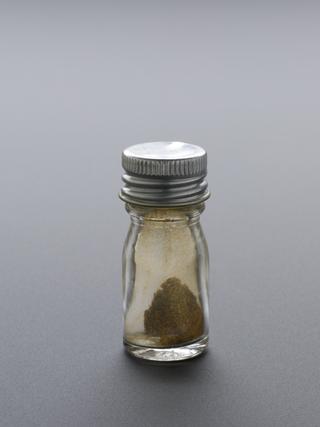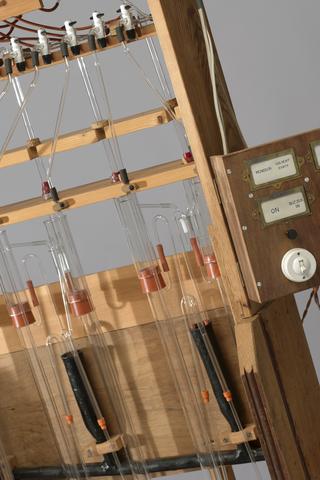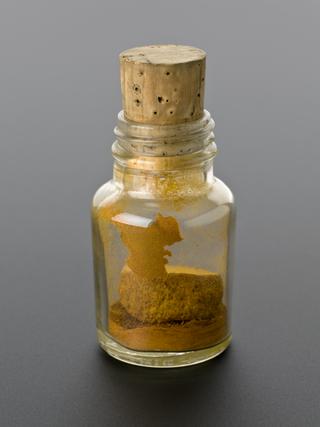
Penicillium Mould presented by Alexander Fleming
- Made:
- 1935 in United Kingdom




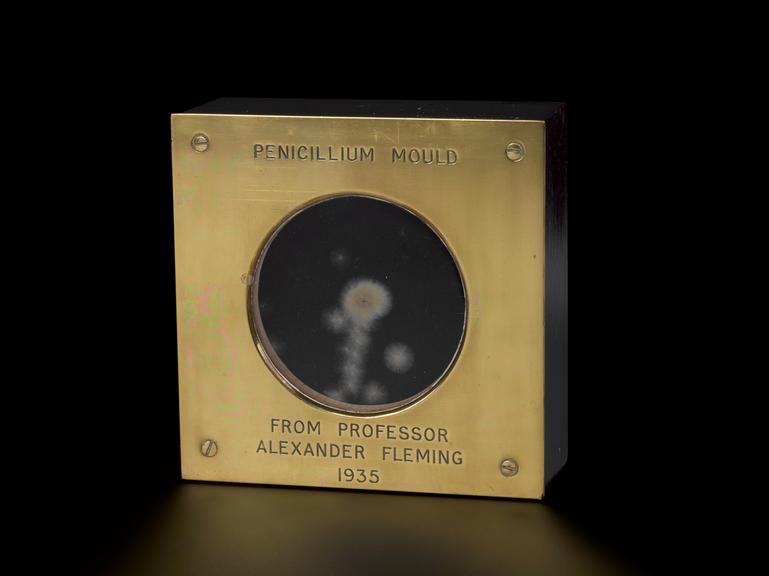


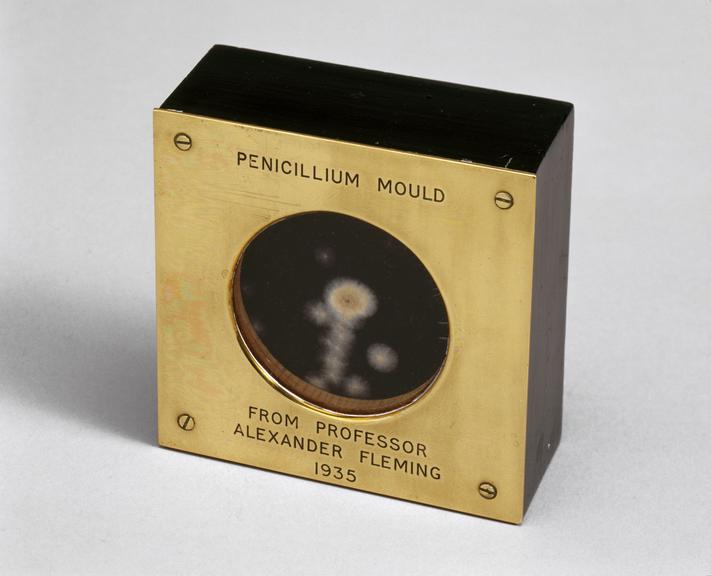
A sample of Penicillium mould presented by Alexander Fleming to Douglas Macleod, 1935.
The British biologist and pharmacologist Alexander Fleming gave this sample of the mould Penicillium notatum to a colleague at St Mary's Hospital, London, in 1935.
Seven years earlier, Fleming had discovered by chance that this species of mould produces a substance he called 'Penicillin' that was found to have powerful antibiotic properties. This sample marks penicillin's transition from an interesting phenomenon to a potential drug.
Details
- Category:
- Biotechnology
- Object Number:
- 1997-731
- Materials:
- penicillium mould, wood, copper alloy and leatherette
- Measurements:
-
overall: 76 mm x 77 mm x 33 mm, .14kg
- type:
- penicillium mould
- credit:
- Christie's South Kensington Limited

